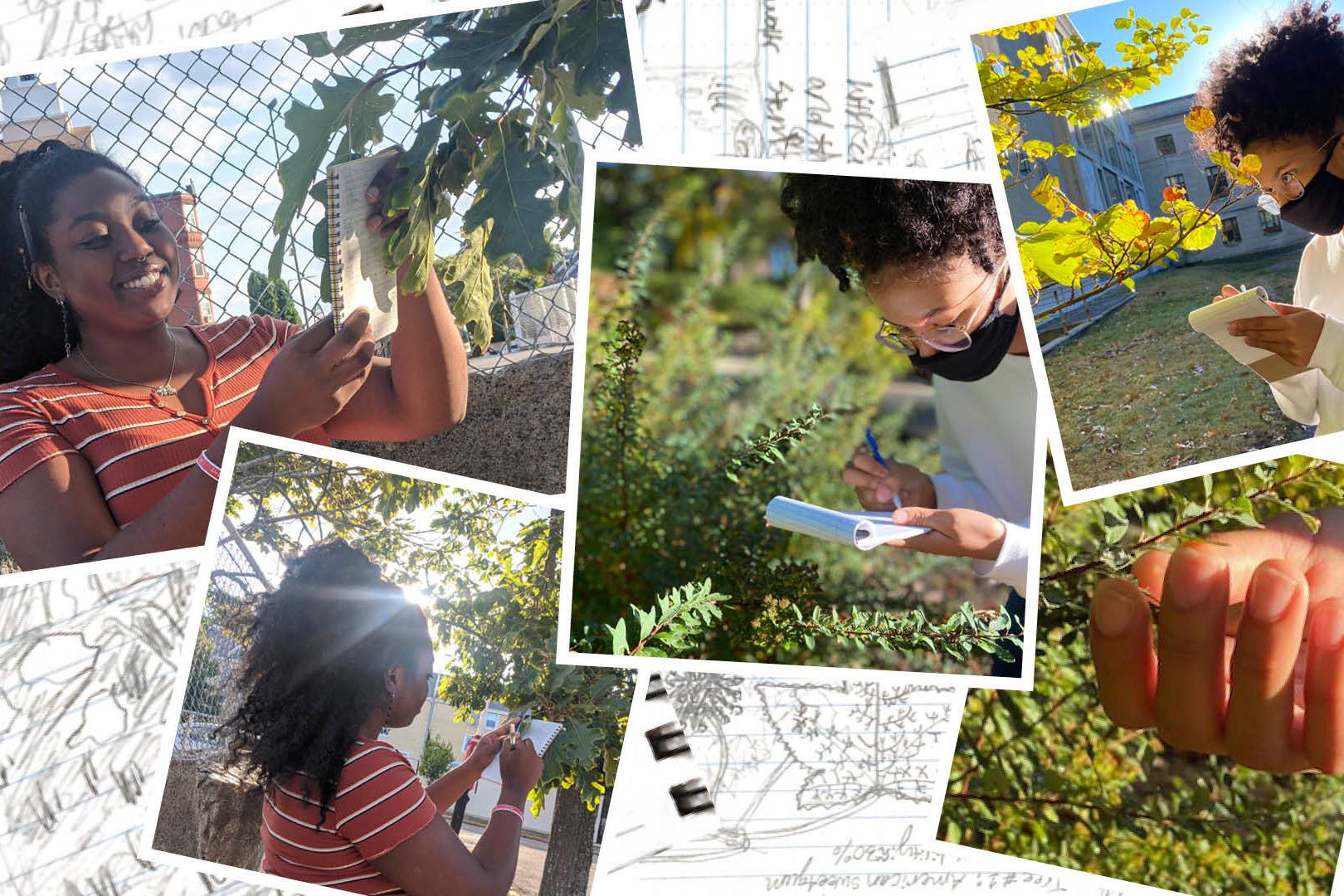For six weeks this summer, 14 Wellesley students conducted research through the Paulson Place Challenge, an adaptation of a summer research opportunity usually offered on campus by the Paulson Ecology of Place Initiative that was canceled due to the pandemic. Students developed research projects based in their own communities, exploring how the tree canopy affects biodiversity, heat, flooding, and airborne particulate matter in urban and suburban areas. They collaborated remotely with Wellesley faculty and staff from across STEM fields.
The summer program aimed to give students an inclusive research experience that would teach them transferable skills, increase their understanding of the scientific process, develop their scientific curiosity, and build a sense of belonging at Wellesley and in the STEM community.
Frannie Adams ’21 lives in Roxbury, Mass. She and the other student researchers in her group, who were in Orange, N.J., New Britain, Conn., and suburban Woodstock, Ga., studied how trees can help preserve biodiversity in built environments, mitigate heat, and support wildlife.
“One of our goals was to develop closer bonds to nature and environments directly around us,” said Adams, an environmental studies major and economics minor. “As someone who has always been fascinated by nature, it was beautiful to see how my groupmates started opening their eyes to the world around them and got excited to share and discuss their findings or cool facts they learned.” Her team used software programs such as iNaturalist and an app called LeafSnap to identify trees and their natural attributes.
“It was beautiful to see how my groupmates started opening their eyes to the world around them and got excited to share and discuss their findings or cool facts they learned.”
Adams’ team used a geographic information system (GIS) to develop maps that showed urban heat islands—spots where temperatures are considerably higher than in surrounding areas—throughout their towns and compared their locations with areas that had a tree canopy. She said creating the map showed the stark contrast between her inner-city, low-income community and other types of residential areas, and how her city is impacted by relatively low tree canopy. “I think it really stresses the need for mitigation through increasing green space preservation and constructed areas,” she said. Adams noted that a lot of construction is happening in Roxbury, adding luxury housing rather than green spaces or affordable housing. “I think people’s priorities really need to shift,” she said, “and they need to think more about current residents and better living conditions for people, animals, and nature here, rather than further complicating the problem by promoting a higher population and bringing more housing stacked and packed densely in this community.”
Kyaralind Vasquez-Liriano ’23 and her group studied air quality disparities in their communities, hypothesizing that particulate matter from sources like agriculture and power plants, which contributes to poor air quality and respiratory diseases like asthma, would be higher in places with low tree canopy and lower in places with high canopy coverage. Vasquez-Liriano conducted her research in Roxbury while her fellow researchers worked in St. Paul, Minn., Wellesley, Mass., Phoenix, Ariz., and Inglewood, Calif.
For her research, Vasquez-Liriano, who plans to major in biology, used i-Tree Canopy, a web-based application that helps classify ground cover, and a handheld air quality monitoring device called Airbeam. She found that within a 10-minute walk of her home the air quality was moderate, a rating that she speculated was affected by the number of cars in the area as well as construction. The team member in Wellesley found that town had better air quality. “We observed that, in general, more affluent places such as Wellesley could afford greener areas and had slightly better air quality than Roxbury, where it was fluctuating,” Vasquez-Liriano said.
The group’s final results didn’t quite support their hypothesis—they found no significant differences in air quality between sites with high and low tree canopies. Uncontrolled variables, such as pollen and vehicle emissions, may have affected the results as well. The team suggested that future studies could be more robust if these factors were considered.
Though the results were not what she expected, Vasquez-Liriano enjoyed the process. “I think it was still worthwhile to test and learn more about our communities, in general,” she said. And, importantly, new questions can now be addressed that might help target sources of air pollution in the neighborhood.
